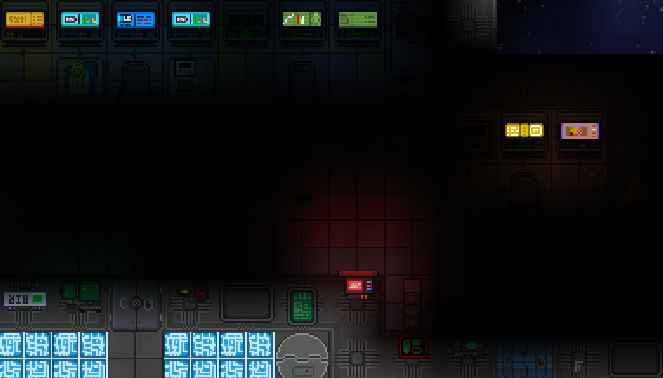In our case it's planes. Lighting planes are (usually) placed on top of every object in the world. However there are some really nice effects you can get by making certain objects ignore that lighting plane.
Normal layering

Layering the computer screens over the lighting

This was done in https://github.com/tgstation/tgstation/pull/39973
As you can see it's already possible to an extent with existing features, just layer the screen over lighting and you get some nice looking glow effects. However there is a major flaw as I state in the pr above: you can't get rendered on top of *just* the lighting layer. Any object that should be on top of one of these glow effects will instead be rendered underneath unless it also gets layered on top of lighting.
My suggestion is to make it possible for objects to be layered on top of specific planes. This would allow you to do things like make the end of a cigarette glow but not be a mysterious glowing dot when under a pile of other items.
More than just computer screens, a few examples follow such as the e-sword, PDAs, any sort of device laying on the ground that would feature this.
I'm surprised this wasn't a thing sooner and want it ASAP.
Maybe it'd be possible to hear Lummox's opinion on this?